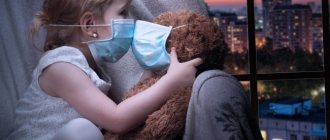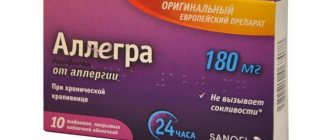Red spots on the body - causes.
03.09.2021
Many people consider the appearance of red spots on the skin to be a consequence of allergies . But sometimes they are wrong; such rashes on the body can
be symptoms of serious illnesses. Therefore, you need to know what causes such redness.
Red spots on the body and neck
If red rashes appear all over the body and neck , and also itch, then the reasons for their occurrence may be as follows.
Pityriasis versicolor
Such rashes are not very dangerous to health, but still this is not a reason to start them. You need to try to get rid of them quickly.
This can be done with the help of special antifungal agents. After getting rid of pityriasis versicolor, it is recommended to spend some time
carry out hardening exercises, and also douse yourself with acidified water every day.
Atopic dermatitis
Such redness and itching appear due to the ingestion of certain foods or are a consequence of interaction with animals.
In this case, you need to determine what exactly caused the redness of the skin and exclude allergens . After a certain period of time, the stains will disappear on their own.
Emotional experiences
Sometimes small red spots on the body may appear after experiencing severe stress. In this case, you need to take a contrast shower, and the spots
on the skin, decrease in size and disappear over time.
Allergy
Itchy redness on the body may be the result of an allergic reaction to certain foods, sunlight or other factors. You need
get rid of the cause of the allergy , and the spots will disappear soon.
Hyperhidrosis Raised redness on the armpits . The most common cause is increased sweating . Such spots are accompanied
unpleasant smell. Then you must strictly follow all the rules of personal hygiene and use a special deodorant that will regulate sweating .
Infectious diseases
Also, red rashes on the skin can be signs of various infectious diseases such as lichen , eczema and dermatitis . Besides everything
above, spots on the skin can occur due to diseases such as chickenpox, measles and scarlet fever.
Children who develop such rashes need not only treatment, but also treatment of the skin with special medications that
have a calming effect. This must be done because the child’s skin is very delicate, and with constant scratching the child can get
there is some other infection there.
If inflammation appears on the skin of a child who uses diapers, then this is diaper rash. We must try to give the child more time
carried out without a diaper and smear the skin with a special ointment based on Vaseline.
Red spots on the chest
If redness appears on the chest , which constantly causes itching, then this is evidence of hormonal imbalance and problems with
internal organs. Redness may also occur on the face or hands. The reason for all this may be certain foods such as strawberries or honey.
Quite rarely, spots in the chest are symptoms of: - allergies to household chemicals or cosmetics; - urticaria .
Red spots on hands
Scabies. Most often, red spots on the hands are a symptom of scabies. As a rule, these spots are accompanied by severe itching, which increases
at night or after swimming.
Poor nutrition
Red spots both on the hands and throughout the body may indicate poor nutrition. Such rashes may appear if
a person constantly eats smoked meats, flour, fatty and fried foods.
Lane's disease
Red spots on the palms may be symptoms of Laneux's disease. Typically, spots appear on the wrists, palms and between the fingers. In order to
To cure Lana's disease, she needs to take special medications.
Published in Dermatology Premium Clinic
Drug allergies - symptoms and treatment
Allergies to medications can occur in any part of the body and in any organ. Symptoms range in severity from minimal discomfort to life-threatening conditions, and their duration ranges from minutes to weeks or months.
There are three groups of drug allergy symptoms :
- manifestations that occur in the first minutes or within an hour after administration of the drug - acute urticaria, anaphylactic shock, bronchospasm, angioedema;
- allergic reactions of the subacute type, developing up to 24 hours after using the drug - maculopapular exanthema, fever, thrombocytopenia, agranulocytosis;
- symptoms that develop within a few days or weeks after using the medicine - serum sickness, damage to internal organs, lymphadenopathy, vasculitis, arthralgia.
The most common manifestations of drug allergies:
- urticaria - the appearance on the skin of the body and face of rash elements from small pale pink to large spots of bright pink or even burgundy color, occupying almost the entire area of the body (a distinctive feature is the itching of these elements);
- increased temperature due to rashes (not always);
- swelling of the face or eyelids (most often asymmetrical);
- damage to the upper respiratory tract (bronchospasm).
With drug allergies, various disorders are possible:
- systemic (affecting the entire body);
- localized:
- skin lesions;
- damage to other organs and systems.[11]
SYSTEMIC LESIONS
Anaphylaxis is a serious life-threatening systemic hypersensitivity reaction. It occurs literally a few minutes or hours after the penetration of the allergen.
Anaphylaxis is indicated by the occurrence of two or more of the following symptoms:
- widespread urticaria on the skin and/or mucous membranes, which is accompanied by itching and/or redness, swelling of the lips, tongue or uvula;
- coughing, sneezing, nasal congestion, wheezing in the chest, shortness of breath, difficulty breathing (sometimes with noise and whistling) and, as a result, hypoxemia (lack of oxygen in the blood);
- a sharp drop in blood pressure (BP), loss of consciousness, sphincter paralysis;
- changes in the digestive system - cramping abdominal pain and vomiting.
Another variant of the course of anaphylaxis is an acute isolated decrease in blood pressure, which also occurs a few minutes or hours after taking the allergen drug. Systolic (upper) blood pressure in adults drops below 90 mm Hg. Art. or more than 30% of the initial pressure. The level of blood pressure in children and its reduction depends on age.
Quite often, similar symptoms may indicate non-allergic anaphylaxis. Its treatment is also no different from the relief of allergic anaphylaxis. The only difference is that true anaphylactic shock is much more severe and the risk of mortality is higher.
Acute severe widespread dermatoses:
- Exudative erythema multiforme (EME) is a rash of various shapes, represented by focal redness and “target-shaped” papules, which can develop into vesicles and bullae (bubbles), as well as erosion. The rash usually occurs on the skin of the hands, feet, genitals and mucous membranes.
- Stevens-Johnson syndrome (SJS) is a severe form of MEE that affects not only the skin and mucous membranes, but also internal organs. The area of allergic rashes on the skin occupies no more than 10%. Accompanied by fever and malaise.
- Toxic epidermal necrolysis (Lyell's syndrome) is a severe allergic reaction, life-threatening, manifested by widespread damage to the skin and mucous membrane (more than 30% of the surface), peeling of the skin, severe intoxication and impaired functioning of all organs. This condition is often preceded by MEE and SSD.[2]
Serum sickness is an allergic reaction that lasts several days or weeks. Occurs after the administration of heterologous serums and the use of penicillins, cytostatics, sulfonamides (antimicrobial drugs) and NSAIDs. The first manifestations occur 1-3 weeks after the start of treatment. These include: rash, fever, pain in large joints and swollen lymph nodes. Less commonly, allergies are accompanied by Guillain-Barré syndrome, glomerulonephritis (damage to the glomeruli), damage to peripheral nerves and systemic vasculitis.
Systemic drug-induced vasculitis is an allergic reaction in which a symmetrical hemorrhagic rash appears on the skin of the lower extremities and sacrum. At the same time, fever, malaise, muscle pain and anorexia appear. In more severe cases, the joints, kidneys and gastrointestinal tract are affected. In rare cases, infiltrates (accumulations of blood and lymph) appear in the lungs, and the functioning of nerve fibers is disrupted (manifested by muscle weakness and pain in the affected area of the body).
Drug-induced lupus syndrome is an allergic reaction, the symptoms of which are similar to those of systemic lupus erythematosus. The difference is the absence of a “butterfly” on the cheeks (extremely rare). The course of such an allergy is favorable. It can manifest itself as pain in the joints and muscles with an increase in the size of the liver and impaired renal function (glomerulonephritis). After discontinuation of the allergen drug, the patient's condition improves after a few days or weeks.
Drug fever is an undesirable reaction that differs from other fevers by maintaining relatively good health despite high fever and stunning chills. It disappears 2-3 days after stopping the allergen medication, but if it is used again, it appears after a few hours.
Drug hypersensitivity syndrome (DRESS) is a potentially life-threatening reaction to drugs that causes skin rash and fever, enlarged lymph nodes, hepatitis and other systemic lesions, and increased levels of white blood cells and eosinophils in the blood. The listed symptoms can develop from one week to three months and last about several weeks even after discontinuation of the allergen drug.
SKIN LESIONS
Maculopapular rash is an itchy rash that suddenly appears 7-10 days after starting the medication. Occurs mainly on the torso. May develop into Stevens-Johnson syndrome and Lyell's syndrome. Triggering drugs: penicillins, NSAIDs, sulfonamides and anticonvulsants.
Urticaria - single or multiple blisters of various sizes and locations, capable of merging and accompanied by angioedema. As a rule, the rash disappears without a trace. Provoking drugs : NSAIDs, ACE inhibitors, radiopaque (iodine-containing) substances, B vitamins, narcotic analgesics, sulfonamides, penicillins and other antibiotics.
Angioedema is a painless swelling of various localizations with clear boundaries that is painless to the touch, which is sometimes accompanied by a rash like urticaria and itchy skin.
Allergic vasculitis is an inflammation of the vascular walls, which is accompanied by symmetrical rashes in the form of small hemorrhages on the skin of the legs (usually in the lower third), buttocks and arms. At the same time, the skin of the face and neck remains unchanged. Provoking drugs: sulfonamides, barbiturates, gold salts and iodine-containing drugs.
Allergic contact dermatitis is an allergic skin lesion that occurs at the site of drug exposure, which is manifested by erythema, edema, and sometimes the appearance of vesicles and bullae. In some cases, inflammation may spread to an area of skin that has not been in contact with the drug. Provoking drugs: neomycin, chloramphenicol, sulfonamides, benzocaine, penicillin and other antibiotics.
Fixed erythema is an inflammatory allergic rash in the form of erythema, bullae or edematous plaques of various sizes with clear ridges. It may occur again even after apparent improvement. Two hours after repeated use of the causative drug, the rash appears in exactly the same place and persists for approximately 2-3 weeks, leaving chronic post-inflammatory pigmentation. Provoking drugs: tetracyclines, barbiturates, sulfonamides and NSAIDs.
Photodermatitis is an allergic rash in the form of redness that occurs on open areas of the body, sometimes accompanied by the appearance of vesicles and bullae. Provoking agents: topical drugs, including halogenated phenolic compounds added to soap, aromatic substances, NSAIDs, sulfonamides and phenothiazines.
The Arthus-Sakharov phenomenon is a local allergy in the form of an infiltrate, abscess or fistula, which appears 7-9 days or 1-2 months after contact with the drug. Provoking drugs: heterologous serums and antibiotics, as well as insulin (1-2 months after its administration).
Exfoliative erythroderma is a life-threatening common skin lesion (occupies more than 50% of its surface), represented by redness, infiltration and extensive peeling. Provoking agents: arsenic, mercury and gold preparations, penicillins, sulfonamides and barbiturates.
Erythema nodosum is an allergic reaction in the form of symmetrical and painful when touched subcutaneous red nodes of different sizes, which usually occur on the front surface of the legs. May be accompanied by a slight increase in temperature, malaise, pain in muscles and joints. Provoking agents: sulfonamides, oral contraceptives, penicillins, barbiturates, bromine and iodine preparations.
Acute generalized exanthematous pustulosis is an allergic skin reaction in which pustular rashes appear against a background of redness. It occurs with an increase in temperature to 38°C and the number of leukocytes in the blood. Disappears 10-15 days after discontinuation of the allergen medication. Provoking drugs: calcium channel blockers (diltiazem), sulfonamides, aminopenicillins (ampicillin, amoxicillin) and macrolides.
DAMAGES TO OTHER ORGANS AND SYSTEMS
In addition to the listed clinical manifestations, drug allergies may cause:
- damage to the respiratory system - rhinitis, bronchospasm, inflammation of the lungs and the formation of an eosinophilic infiltrate in it (Leffler's syndrome) - due to allergies to pyrazolones, carbamazepine, acetylsalicylic acid and other NSAIDs, ACE inhibitors, beta-blockers, penicillins and sulfonamides;
- lesions of the hematopoietic system - hemolytic anemia and thrombocytopenia - in response to taking streptomycin, quinidine, rifampicin, penicillin, ibuprofen and other sulfonamides, sulfonylurea derivatives, thiazide diuretics and gold salts;
- damage to the circulatory system - myocarditis (extremely rare) - when taking sulfonamide, penicillin and methyldopa;
- lesions of the gastrointestinal tract and hepatobiliary system - gastroenterocolitis, cholestasis, acute hepatitis, chronic hepatitis (rarely) - when taking pyrazolones, sulfasalazine, carbamazepine, allopurinol, sulfonamides, halothane, isoniazid and phenytoin;
- lesions of the urinary system (extremely rare) - acute interstitial nephritis and glomerulonephritis - a consequence of the body’s reaction to gold salts, NSAIDs, heroin, captopril, sulfonamides, penicillamine, penicillins and other β-lactams, rifampicin, ciprofloxacin and allopurinol;
- lesions of the nervous system - peripheral neuritis - reaction to gold salts and sulfonamides.







